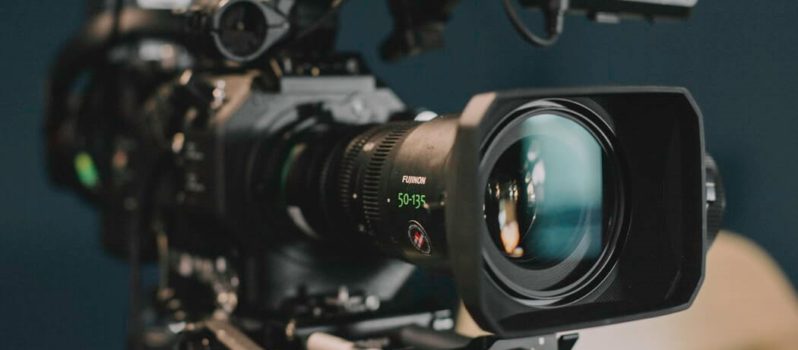Live streaming is now a completely accessible form of video for any business or individual to create. There is an increasing range of equipment, software and video platforms available, meaning people can adapt their live streams to suit their goals and budget. If you’re planning on getting started with live streaming, you need to find the right setup to enable you to offer a high-quality and professional viewing experience for your audience.
A camera is the first port of call, so let’s look at the different types available so you can decide on the best camera for live streaming.
Web cameras
If you have a strict budget and need to keep production costs low, web cameras are a viable option. They’re easy to use, setup and require minimal equipment. This doesn’t mean you can use the webcameras that are built into your desktop or laptop though. You will need an external IP web camera that connects straight to your computer with a USB connection. There’s no hassle or separate encoding software or hardware required, although you may need an external microphone to ensure your audio is as crisp and high-quality as your video image.
The best example of a web camera for live streaming is the Logitech C920 HD Pro, which allows you to go live with an impressive 1080p HD resolution. This camera comes with automatic light and exposure correction, so you don’t have to worry about your stream appearing too dim or exposed for viewers – you can focus on simply offering your audience valuable content. What’s more, the lens is glass rather than plastic, providing a completely crisp and clean image.
There are many video sharing options out there that even allow you to go live directly from your webcam, such as Zidivo’s hosting and streaming platform. Zidivo offers users unlimited support and a wide range of features for you to go live in the highest resolution possible using a user-friendly interface.
DSLR cameras
If your budget is slightly on the larger side or you want to offer a more complex setting, DSLR cameras are also great for streaming. The impressive resolution and video quality make up for the investment, as you can steam in the highest resolutions to offer people a HD viewing experience. While DSLR cameras are not built for live streaming purposes specifically, there are many that do accommodate live streams and allow you to stream for long periods of time with no connection or battery issues.
It’s best to use external microphones to ensure your audio quality is consistent, as well as a software or hardware encoder. Encoders are essential for transcoding video and audio signals into streamable content. DSLR cameras like the Canon EOS 80D are great options for brands or professionals that don’t plan to use the camera for streaming purposes only. You can use DSLR’s for photography and video creation, making it a versatile piece of kit.
Camcorders
If you’re a professional broadcaster and need equipment that will allow you to stream a range of videos in various settings, camcorders are the way to go. They’re built solely for video purposes, allowing businesses or individuals to offer long, dynamic and an unbeatable quality of live streams with no issue.
If quality is your priority, investing in a camcorder like the Panasonic HC-V770 means you can stand out from the live streaming crowd by providing 4k HD videos for your audience. What’s more, camcorders highly versatile and portable as they can be handheld for dynamic streams or part of more formal setups.
Action cameras
Finally, there’s the option to use action cameras. These usually have a wide-angle lens and are aimed at people or businesses that stream more action-packed videos, like music concerts, sporting events, and other dynamic events. If you’re looking to stream a mixture of small and large scale videos, action cameras are more restrictive due to the wide lens.
A lot of action cameras are highly portable, allowing you to stream directly from your camera rather than having to connect to other devices. Take the GoPro HERO7, for example, you can attach it to your person and stream an energetic and engaging feed in top-quality.
As you can see, the best camera for live streaming completely depends on your strategy, goals, and budget. You can even use a smartphone to go live if you haven’t found the right camera for you just yet.




Leave a Reply